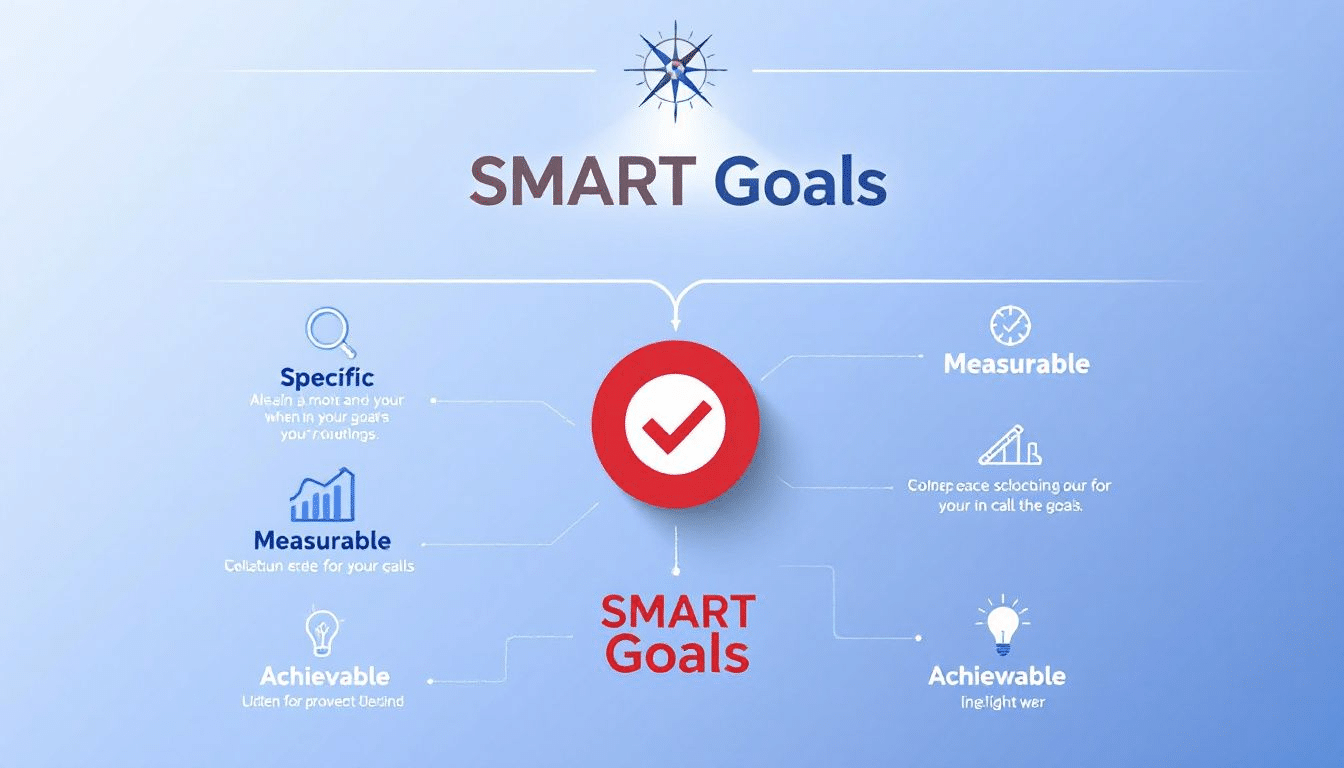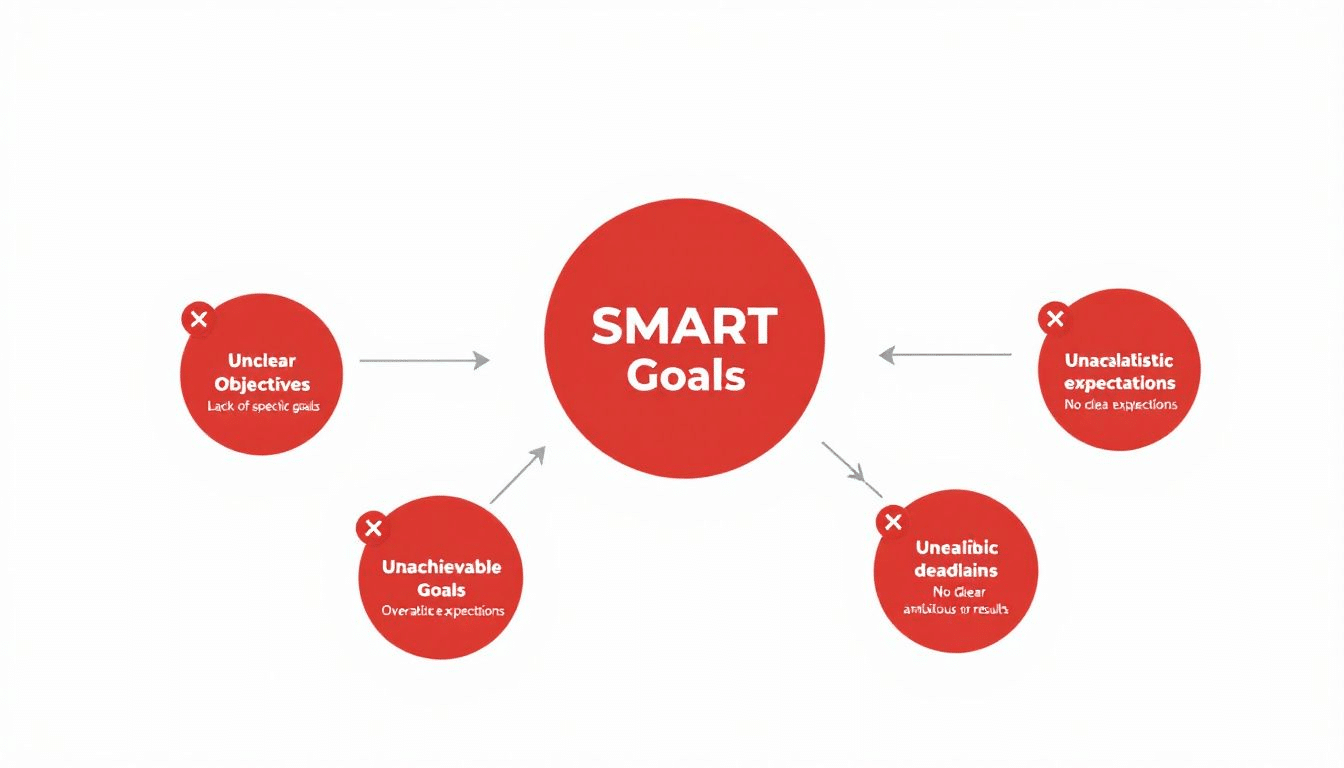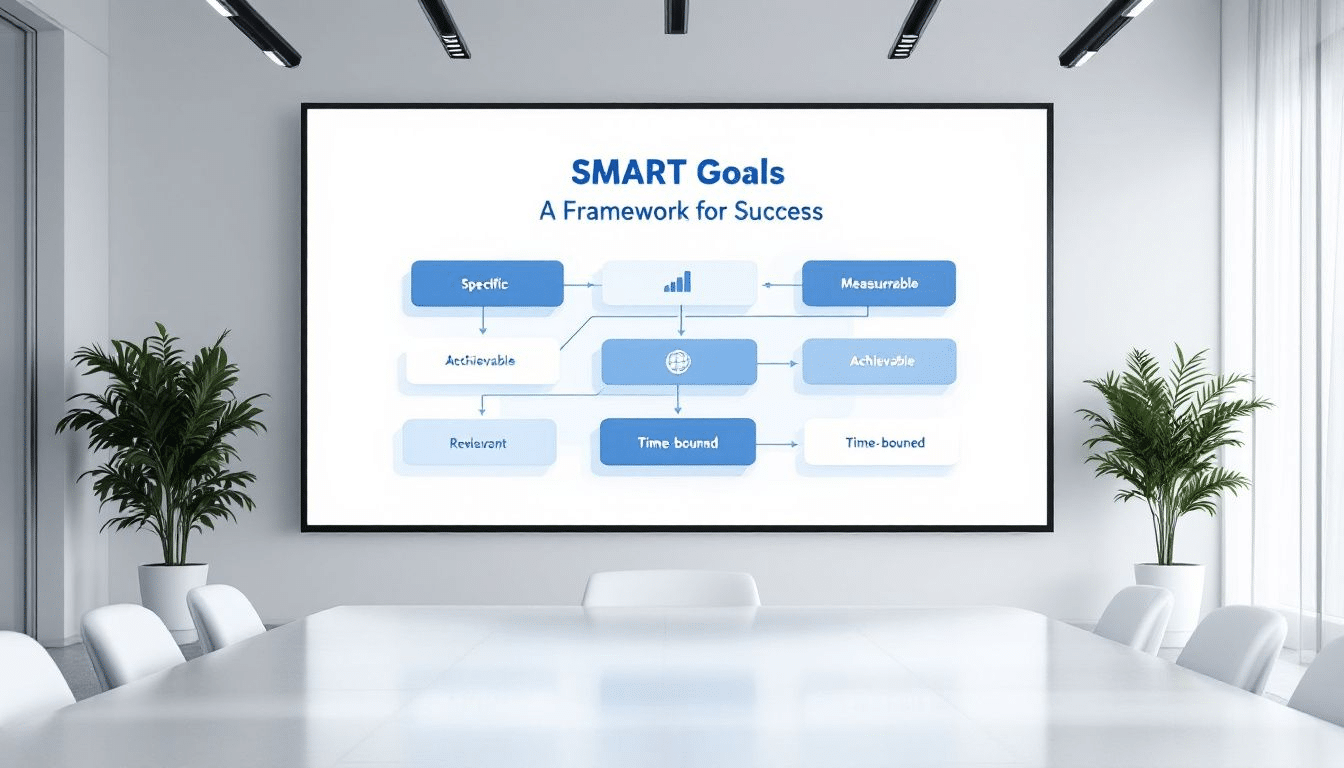Looking to determine which of the following is a smart goal? This article will guide you through the process of identifying SMART goals—those that are Specific, Measurable, Achievable, Relevant, and Time-bound. By the end, you’ll be able to distinguish effectively between well-defined objectives and vague aspirations.
Key Takeaways
SMART goals provide a clear framework by being Specific, Measurable, Achievable, Relevant, and Time-bound, transforming vague ideas into actionable plans.
Common pitfalls in setting SMART goals include vagueness, unrealistic expectations, and multi-tasking too many goals, which can hinder progress and motivation.
Utilizing templates and tools like Smartsheet can enhance the process of drafting SMART goals, ensuring clarity, accountability, and increased chances of success.
Understanding SMART Goals

SMART goals are a game-changer in the world of goal setting. They bring much-needed structure and clarity, making the path to achieving your goals more manageable and less daunting. The smart acronym SMART represents five key components. These components are Specific, Measurable, Achievable, Relevant, and Time-bound. Each letter represents a distinct quality that helps ensure your goals are clear and attainable.
SMART goals aim to eliminate ambiguity and set clear, attainable smart objective with a deadline. Focusing efforts and managing time effectively with smart goal setting helps in achieving desired outcomes and avoiding aimlessness.
Criteria for Identifying a SMART Goal
A SMART goal must meet five key criteria: Specific, Measurable, Achievable, Relevant, and Time-bound. This framework transforms vague aspirations into measurable smart goals concrete plans.
Each criterion shapes a well-defined goal: Specific goals eliminate ambiguity, measurable goals track progress, achievable goals ensure realism, relevant goals align with broader objectives, and time-bound goals create urgency while defining objectives.
Let’s delve into each smart criteria to understand how they contribute to smarter goals.
Specific
A specific goal is clear and precise, leaving no room for ambiguity. It details what needs to be accomplished and who is responsible. For example, rather than saying “increase sales,” a specific goal would be “launch a new product line by Q3 with a target of $500,000 in revenue.” This clarity helps focus efforts and resources.
Specific goals also outline steps to achieve them. For instance, a personal goal might be “achieve a specific certification by attending workshops and completing online courses within six months.” This detail ensures everyone understands their roles and the desired outcome.
Measurable
Measurable goals feature quantifiable benchmarks to track progress and determine success. For example, a business might aim to “increase monthly users by 1,000 through targeted marketing campaigns.” This clarifies when the goal has been achieved.
Tracking these benchmarks allows for strategy adjustments to stay on course. For example, a team might set a goal to “enhance customer satisfaction scores by 20% through improved service protocols within six months.” Regular progress measurement maintains focus and motivation.
Achievable
Achievable goals reflect realistic expectations, considering resources and time. They are grounded in reality, accounting for factors like existing experience, qualifications, and workload. For example, aiming to “increase monthly users by 1,000 by optimizing app store listings and social media campaigns” is an achievable goal.
To determine achievability, assess if the goal is within your project scope and the right time to undertake it. Achievable goals prevent overextending yourself or your team, leading to sustainable progress.
Relevant
Relevant goals align with broader objectives, ensuring meaningful contributions to overall ambitions. For example, if a company’s ultimate goal is market dominance, a relevant goal might be “partner on five cross-functional projects to enhance product usability and customer satisfaction.” This supports the larger vision.
Considering how personal goals align with professional ambitions is crucial. Relevant goals maintain focus and motivation, fostering a sense of purpose.
Time-bound
The time-bound aspect of SMART goals maintains urgency and focus. Deadlines create urgency, driving goal achievement and preventing scope creep. For example, aiming to “participate in the San Diego half marathon set for March, which is the target date” provides a specific time frame to work towards.
A realistic timeframe helps focus on long-term goals, ensuring day-to-day tasks don’t overshadow them. Time-bound goals include specific deadlines, crucial for tracking progress and maintaining momentum.
Common Mistakes in Setting SMART Goals

Despite their benefits, common mistakes can hinder the effectiveness of SMART goals. Setting vague goals lacks clarity and direction, leading to inaction. Being overly ambitious can result in discouragement and loss of motivation when goals aren’t met.
Failing to account for the time needed to complete a goal leads to frustration and indefinite delays. Setting too many goals simultaneously can spread focus too thin, reducing effectiveness. Avoid these pitfalls by ensuring goals are clear, realistic, and manageable.
Examples of SMART vs. Non-SMART Goals

Understanding the difference between SMART and non-SMART goals is crucial for effective goal setting. SMART goals are specific, measurable, achievable, relevant, and time-bound, while non-SMART goals often lack clarity and focus. For example, a SMART goal might be “grow the number of monthly users by 1,000,” whereas a non-SMART goal might be “improve sales.”
SMART goals provide a roadmap for managing performance effectively, ensuring all efforts align with defined objectives. Below are smart goals examples in business, personal development, and team objectives.
Business Example
A SMART business goal example is to “produce at least three different types of large-scale marketing assets per month for Q1.” This goal is specific, measurable, achievable, realistic, and time-bound, providing clear direction for the marketing team.
In contrast, a non-SMART goal like “increase sales” lacks specificity and measurable outcomes, making it difficult to track progress and success. Setting SMART goals ensures objectives are clear and attainable, contributing to overall success.
Personal Development Example
A SMART personal goal could be to “read one business book per month for a year.” This goal is specific, measurable, achievable, relevant, and time-bound, helping track progress and maintain motivation.
In contrast, a non-SMART goal like “read more books” lacks specificity and a deadline, making it easy to procrastinate and lose focus. Setting SMART goals in personal development provides clear targets to guide actions and measure progress.
Team Objective Example
An example of a SMART team goal is to collaborate on five cross-functional projects. These projects could focus on areas such as usability testing, customer surveys, customer marketing, or research and development. This goal is specific, measurable, achievable, relevant, and time-bound, ensuring the team’s efforts are aligned and focused.
In contrast, a non-SMART goal like “improve team collaboration” lacks clear direction and measurable outcomes. Setting SMART goals helps teams work more effectively towards common objectives, enhancing overall performance and success.
Tools and Templates for Writing SMART Goals

Several tools and templates are available to assist with writing SMART goals. Downloadable smart goals template in Microsoft Word, Excel, and PDF formats provide a framework breaking down goals into specific, measurable, achievable, relevant, and time-bound components. These templates ensure goals are structured clearly, improving clarity and motivation to write smart goals.
Smartsheet is a popular tool for project management, planning, tracking, managing, and reporting goals in real-time within a smart framework. It enhances transparency, accountability, and alignment of resources and schedules.
The Microsoft Word SMART Goals worksheet is also useful for brainstorming and refining SMART goals.
Benefits of Using SMART Goals

Using SMART goals offers numerous benefits. They provide a structured framework for setting objectives, enhancing clarity and accountability compared to vague and undefined goals. SMART goals transform resolutions into a concrete roadmap, increasing the chances of achieving objectives and fostering accountability.
They inspire teams by clarifying how individual contributions affect overall objectives, boosting morale and creating career development opportunities. Realistic goals promote sustainable progress, preventing discouragement and enhancing overall success rates. By aligning efforts with clear objectives, SMART goals provide opportunities for personal and business success.
How to Track and Measure Success
Tracking and measuring the success of SMART goals is crucial for staying on course and achieving objectives. Progress can be measured through specific metrics and milestones tied to subtasks. Using benchmarks effectively measures goals, making it easier to understand progress.
Implementing periodic measurements and weekly status updates provides valuable insights into progress. Regularly reviewing goals helps recognize achievements, adjust for challenges, and ensure deadlines are met. This process not only tracks success but also identifies areas for improvement and celebrates milestones.
Summary
In summary, SMART goals provide a clear and structured approach to goal setting, ensuring that objectives are specific, measurable, achievable, relevant, and time-bound. By avoiding common mistakes and using available tools and templates, you can set and achieve SMART goals effectively.
Remember, the journey to success starts with a single step—setting a SMART goal. Embrace the SMART framework, track your progress, and celebrate your achievements. The path to your dreams is now clearer than ever. Go out there and make your goals a reality!
FAQ
What does SMART stand for?
SMART means setting goals that are Specific, Measurable, Achievable, Relevant, and Time-bound, ensuring your objectives are clear and reachable. Embrace this framework to turn your aspirations into actionable plans!
Why are SMART goals important?
SMART goals are important because they give you a clear framework to focus your efforts, leading to effective achievement of your desired outcomes. Embrace them to boost your success!
How can I ensure my goals are achievable?
To ensure your goals are achievable, assess your available resources, time, and qualifications. This way, you can set realistic and attainable objectives that inspire confidence in your journey!
What are common mistakes in setting SMART goals?
Common mistakes in setting SMART goals are being too vague, overly ambitious, and not realistically assessing the time required. Focus on clarity and achievable timelines to set yourself up for success!
Are there tools available to help write SMART goals?
Absolutely! You can find downloadable templates and tools like Smartsheet and Microsoft Word to help you write and track your SMART goals effectively. Let these resources guide you toward your success!





